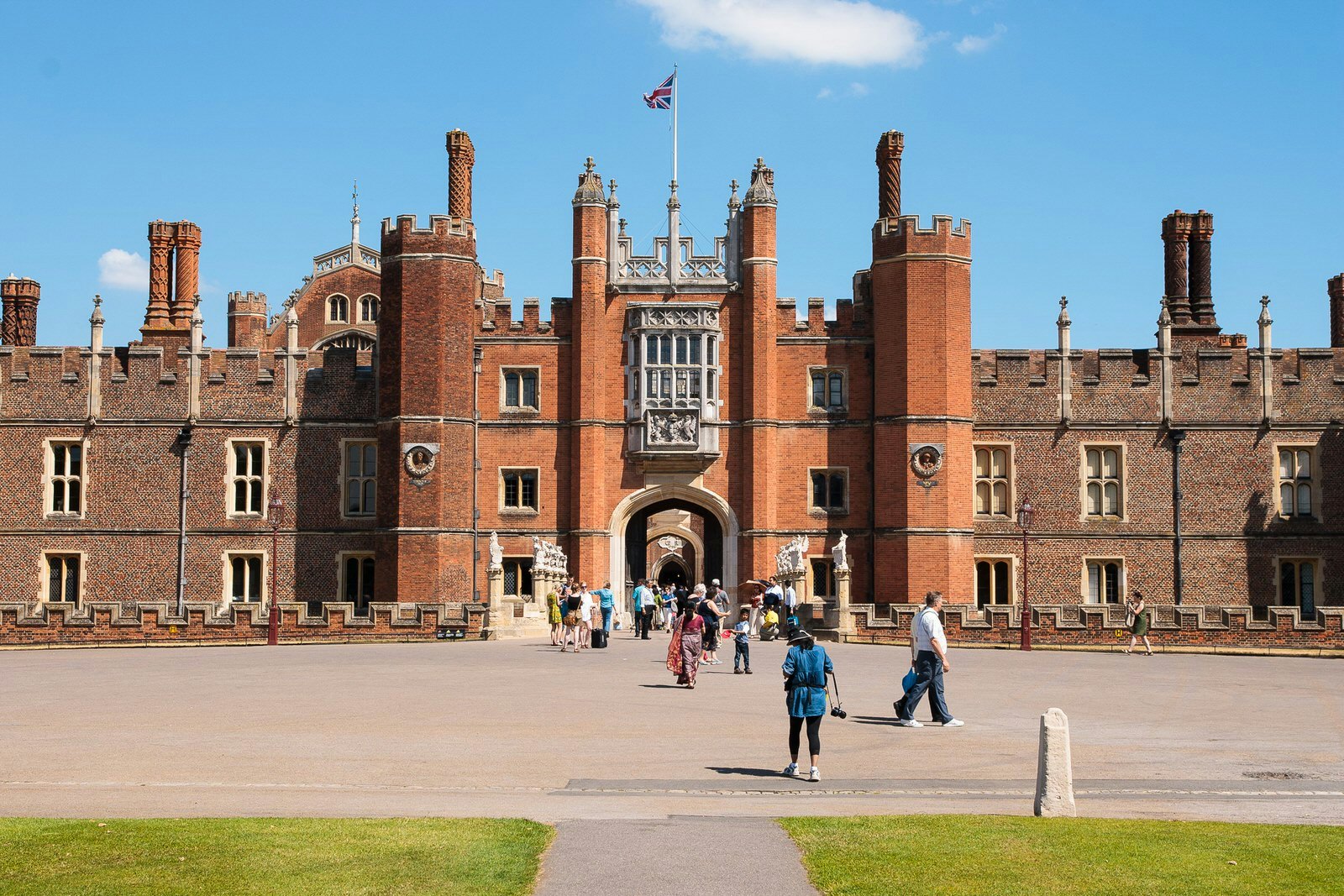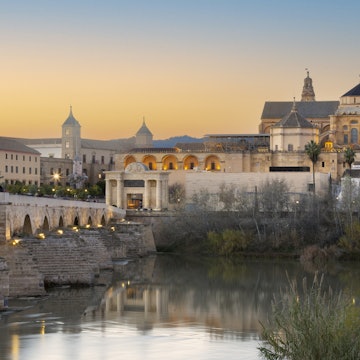
London through the ages: architectural insights into the capital's history
Jan 22, 2019 • 8 min read

London's current skyline is the result of its two thousand years of history © Ian.CuiYi / Getty Images
Given the various calamities that have befallen London over the last two thousand years, it’s remarkable that any of it exists today at all. This is a city that’s been ravaged by fire, ridden with plague and bombed to rubble. It’s encountered the wrath of angry local Boudicca, the bloodlust of the Vikings and more rebellions and riots than you can shake a pigeon at. And not only has London endured, but it’s often done so curiously intact, with architectural clues to its storied past scattered just about everywhere.

First centuries AD: all roads lead to – London
Though small settlements are likely to have been established along the Thames in prehistoric times, London's true history begins with the Romans, who set up camp on the north bank of the Thames in AD 43 and named their new town Londinium. The port flourished, becoming one of the capitals of Roman Britannia and a centre of imperial trade – fitting, given that Londinium occupied roughly the area of the present-day financial district known as The City. After a brief hiccup in 60 AD, when a native tribal leader called Boudicca razed the place (we won’t get into the ins and outs, but let’s just say she had a strong motive), the Romans regained control and rebuilt Londinium, this time as a planned town.

With increasing unrest across the empire, the city was fortified some time around 200 AD with a huge wall built to protect it. The outline of London Wall can be traced in many modern streets and even some segments of it remain to this day, with particularly well-preserved parts just north of the Tower of London, next to Tower Hill tube station. Nothing else from Roman London remains above street level, but you can see the outline of an amphitheatre in the Guildhall Art Gallery and a temple to the god Mithras is open to visitors underneath the Bloomberg building.
At its height, Londinium had a population of at least 30,000, and possibly as much as 60,000, but as the empire began to crumble in the 5th century, the Roman legions withdrew from Britain, and by AD 410 Londinium had been abandoned.
The 5th to 10th centuries: Anglo-Saxon settlers, Viking marauders

Gradually a new people called the Anglo-Saxons moved in from northern Europe, re-establishing a port just to the west of the Roman city in the area around what is now Covent Garden. Due to their buildings being made of wood and other perishable materials, little evidence of their presence remains, but plenty of information on them can be found at the Museum of London. They had a significant effect on London as we know it today, settling around the original town in remote countryside communities that would eventually grow into the mass of villages making up what is now Greater London. Present day districts whose names end in ‘-wich’, ‘-ham’ and ‘-ton’ are usually Anglo-Saxon in origin (for example Dulwich, Balham and Acton).By the 800s, Lundenwic, as the town was called, was booming – a fact that didn't escape the Vikings. For two hundred years, these intrepid Scandinavian warriors and their longships appeared and reappeared on the Thames, and London was wrestled like a rugby ball in a scrum between native and invading forces.
The Middle Ages: William conquerors, builds to oppress

Power struggles continued to play out until 1066, at which point a duke from Normandy in northern France called William decided to throw his hat into the ring: he invaded and conquered England, and another chapter in London’s tumultuous history began. Mindful of the threat posed by the persistent Vikings and the unhappy Anglo-Saxons he now ruled, one of the first tasks for William the Conqueror, as he is best known, was to secure the River Thames, and this is why today we can gaze upon the spectacular Tower of London. Its oldest part, the White Tower, has stood in near perfect condition for almost a thousand years and still captivates the imaginations of locals and visitors alike.
There’s not much else of Norman London still standing, but what is is worth your attention. In the 12th century the church of St Bartholomew-the-Great was founded, and its chancel has survived the ages, providing an exquisite glimpse at original Norman architecture. St Etheldreda’s Church, tucked away nearby on a Holborn cul-de-sac, was built a century later and is also beautifully preserved.
The 16th century: Tudors take charge

As the centuries passed, new scuffles broke out over who would rule England, and by the end of the 1400s the Tudors were in charge, starting with the reign of Henry VII. He was followed by Henry VIII, whose influence on London is still clearly visible today. He requested his chief adviser Cardinal Wolsey hand over the magnificent Hampton Court Palace, cordoned off what’s now Hyde Park to use as a hunting ground, and also built St James’s Palace in Westminster, whose original red brick Tudor exterior can be seen from Pall Mall.
The reign of his daughter, Elizabeth I, was something of a golden age for London, as the city became a major European hub for trade, explorers were sent out around the world to reap riches from new lands, and writers like Shakespeare entertained the masses. The capital became extremely wealthy, and immigrants began to pour in. From 1530 to the turn of the century, the population increased from 50,000 to 225,000, and it would double to half a million in the 50 years following that. London was becoming a megacity.
The 1600s: catastrophic blessings

London continued to grow in the 17th century under the Stuarts, Scottish royalty who ascended the English throne in 1603. The city must have seemed like it was unstoppable, but in 1665 the Great Plague broke out. By the time the epidemic had come to its grisly end, one fifth of the population, around 100,000 people, had died. And worse was to come.
It was the conditions so favourable to the spread of the plague – wooden, thatched housing packed along narrow streets – that would set the scene for the next catastrophe. On Sunday 2 September 1666, a fire started in a bakery on Pudding Lane in the heart of the City. Four days later, 80% of medieval London had been incinerated, and with it more than 13,000 houses and almost 100 churches.
Although the Great Fire of London was brutally destructive, it did clear the way for new growth. The ancient street plan remained, but the new buildings were made of stone, and were vastly safer and more sanitary (plague never came back) than their predecessors. Clearly new homes were needed, but so too were churches, and for these, one name rings out: Christopher Wren. A prolifically talented architect, Wren was responsible for designing 52 new churches, including his masterpiece that is St Paul’s Cathedral, whose great dome remains an integral and much-loved part of the cityscape to this day – views of it from different parts of London are protected. He was also the brains behind the Monument, a giant column that commemorates the fire.
The 18th and 19th centuries: Georgian digs, Victorians dig

As London entered the Georgian Era (1714–1830), it continued to expand, and all those outlying villages were gradually subsumed into the vast metropolis we see today. Elegant new neighbourhoods like Mayfair began popping up for the aristocracy, and numerous beautiful garden squares appeared, such as Bedford Square, which boasts some of the finest Georgian architecture in the country. Towards the end of this period, the current version of Buckingham Palace was built.The Georgians were followed by the exuberantly ambitious Victorians, and throughout the second half of the 19th century, London became the most powerful city in the most powerful empire in the world. Rapid development, fuelled by the Industrial Revolution and imperial expansion, created intense pressure on the city’s population. Poverty was rampant, and getting around was becoming intolerably difficult. The solution to the latter was the London Underground, today an icon and at the time a global first and engineering marvel (though when it opened The Times rather uncharitably called it ‘an insult to common sense’). Some of London's most famous architectural set pieces and buildings, including Trafalgar Square, the Houses of Parliament and Tower Bridge, were all constructed during Queen Victoria's long reign.
The 20th century and beyond: bombs, booms and Brutalism

The capital continued to grow well into the 20th century, but the heady heydays of imperial London came crashing down as a result of the century's two world wars. During World War II, the city was mercilessly targeted by the German Luftwaffe, which dropped some 30,000 tonnes of bombs on the capital. Much was destroyed – one in six buildings to be precise – but, just like during previous disasters, much survived, too. The London Underground provided an incredibly effective sanctuary for the population to shelter from the bombardment, and still occupies a firm place in the hearts of Londoners.The post-war years were about slowly rebuilding, and the results were mixed. Innovative but ugly concrete housing blocks were criticised almost as soon as they were completed. But others, such as the National Theatre and the British Telecom Tower, have become modern icons reflecting the city's insatiable architectural adventurousness. Today, London is fully established as one of the world’s great cities: a beacon of commerce, culture and enlightened ideal with buildings that show off its globally important status. Construction these days is more often vertical than lateral, with a prime example being the Shard, opened in 2013 and currently the tallest building in Western Europe, along with the other skyscrapers jostling for position in the City.
London faces an uncertain few years as it grapples with the outcome of Brexit, but if one thing's for certain, this city has grappled with, and overcome, far worse in the past and still has the buildings to prove it.
https://shop.lonelyplanet.com/products/london-city-guide-11















